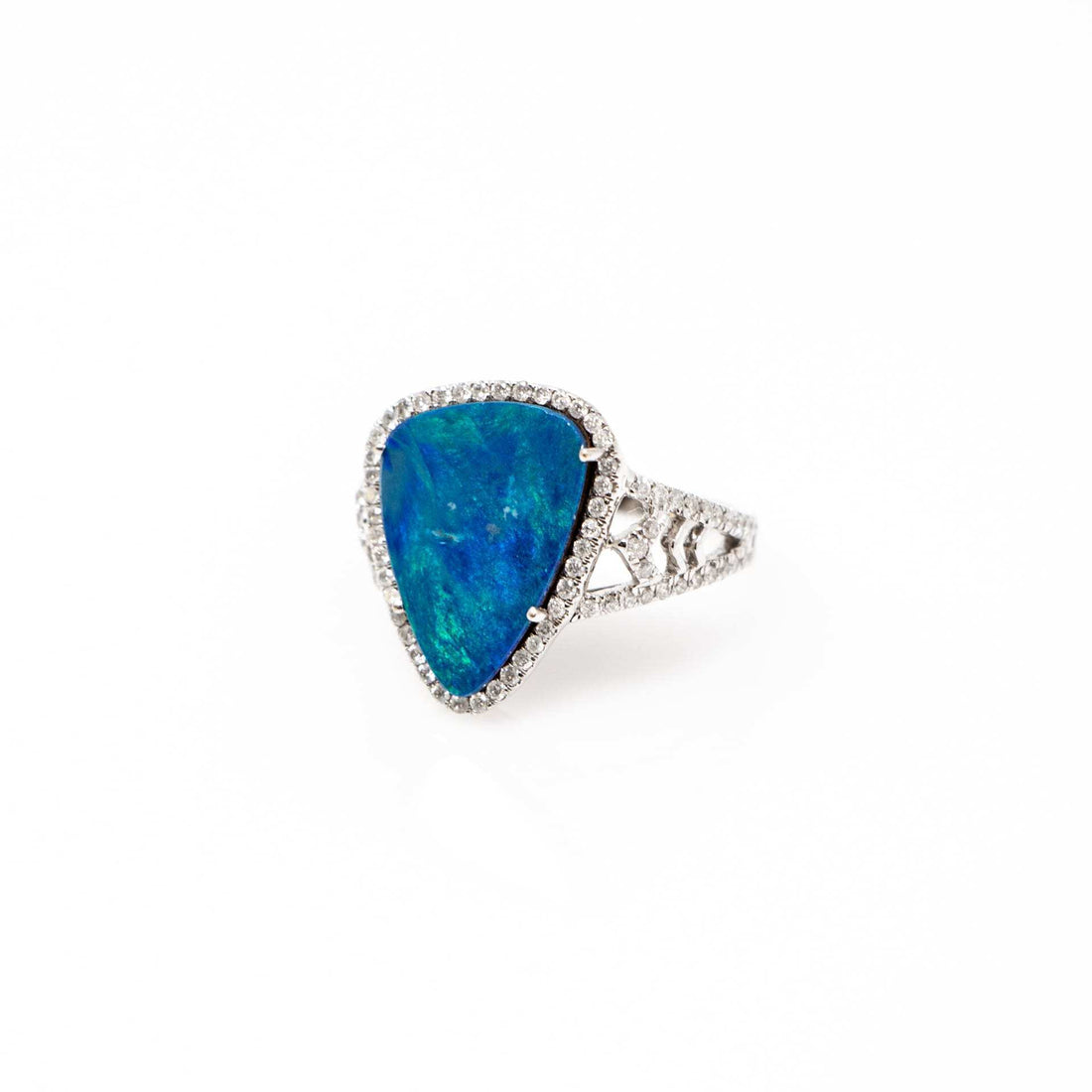For those who are born in October, there are two colorful gemstones to choose from: Opal, which is unlike any other gemstone, and Tourmaline, which comes in every shade of the rainbow.

KALEIDOSCOPIC OPALS
Opal’s uniqueness shows in the very vocabulary used to describe them. The term “play-of-color” refers to the kaleidoscopic quality that varies from opal to opal. Each opal will have a distinct look that is hard to match, unless you are lucky enough to have, for instance, a pair of opals that are cut from the same piece of rough crystal. This wide variation is something to consider if you are looking for a pair of earrings, an opal tennis bracelet, or even a necklace with multiple opals. Make sure to take a good look at how well-matched the opals are!
The name “opal” was derived from the Greek word “opallios”, which means “to see a change in color.” This phenomenon, or “play-of-color,” explains the composition of opals as being made of microscopic silica spheres. Depending on which way the spheres are arranged, the light refracts through, displaying different colors.
The most highly coveted opals are ones that have broad, distinct patches of color throughout the stone. These multi-colored opals are often referred to as “harlequin” opals and are considered “precious” opals compared to “common” opals that don’t display “play-of-color.”

Opals can contain up to 30% water, although the gem-quality material usually contains from 3 to 21 percent. With a hardness of 5.5-6 on the Mohs scale, opals are delicate gems that can easily crack or “craze” if exposed to direct light, dehydration, or extreme temperature changes. Many choose to store their opals in water, especially if you live in a dry climate.
Australian aborigine culture believed that God came to Earth on a rainbow and left opals where his feet touched the ground.

Australia is famous for opal mining, and in the recent past, Australia produced 95% of the world’s opal supply, including on of the finest opal specimens, the “Olympic Australis” from Coober Pedy, Australia. This gemstone weighs 17,000 carats!
In the Middle Ages, opals were considered a lucky stone to wear because they would possess the powers of each gemstone represented in the stone. However, in 1829, Sir Walter Scott’s book Anne of Geierstein changed opal’s reputation due to the main character in the book dying from her opal losing its fire. After the publication of Scott’s book, opal sales in Europe plummeted by 50%.
Because of opal’s delicate nature, they are safely worn in earrings, pins, and necklaces. If you choose to incorporate this lovely gemstone into your wardrobe, make sure to take special care in cleaning and storing your gemstone. Clean your opals carefully with simple soap and water and a soft brush. Storing them separately from other harder gems will keep your opals free from scratches. If you choose to wear your opal in a ring, make sure that it is in a setting that protects it from wear and tear–or wear it for special occasions only. They will reward you with years of charm.

LET’S NOT FORGET THOSE TOURMALINES!
If you choose to wear tourmaline as your October birthstone, you are in for a wide variety of colors! “Tura mali,” which means “stone of mixed colors” in Sinhalese, describes the broad spectrum of colors available for this gemstone. There are beautiful red Rubellites, which gets its color from manganese, and the lush green chrome tourmalines that get their color from chrome and vanadium.
Some tourmalines will display two colors, as seen in the beautiful reds and greens of “watermelon tourmalines,” and then there is the black tourmaline known as “schorl” which is rich in iron.

Tourmalines can be found in Brazil, Madagascar, Sri Lanka, and the U.S., mainly in California and Maine. In the early 1900s, Chinese Empress Dowager Cixi purchased large amounts of pink tourmaline from California, virtually taking tourmaline trade down when the Chinese government collapsed in 1912. In the 1980s and ’90s, new interest was found in tourmalines with the discovery of a beautiful bright blue tourmaline in the Paraíba region of Brazil. The Paraíba region has produced some of the finest tourmaline specimens to date, including the world’s largest weighing 191.87 carats.
The ancient Egyptians believed that the beautiful array of colors tourmalines came in was caused by passing through a rainbow on its journey up through the Earth’s center. Many today believe that black tourmaline can shield against radiation and toxins. Magicians would use black tourmaline as an amulet to protect them from negative energy.
The hardness of tourmaline is rated 7 to 7.5 on the Mohs scale, so it is generally suitable for daily wear in rings as well as earrings and pendants. Tourmalines should be cleaned with warm, soapy water and a soft brush as they can be damaged by heat from steam cleaners. With so many lovely colors to choose from, you can’t go wrong with selecting a piece of tourmaline jewelry!

